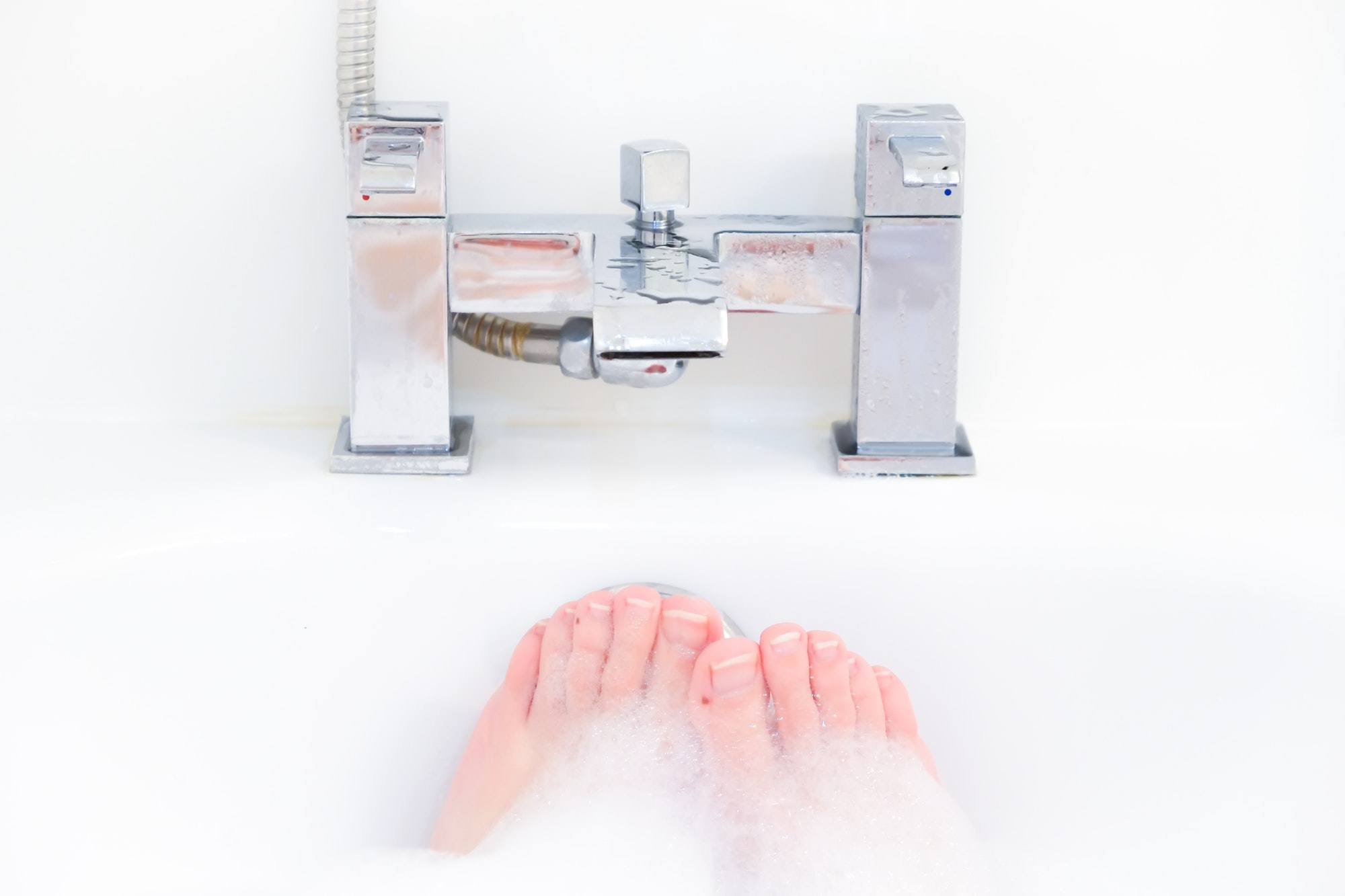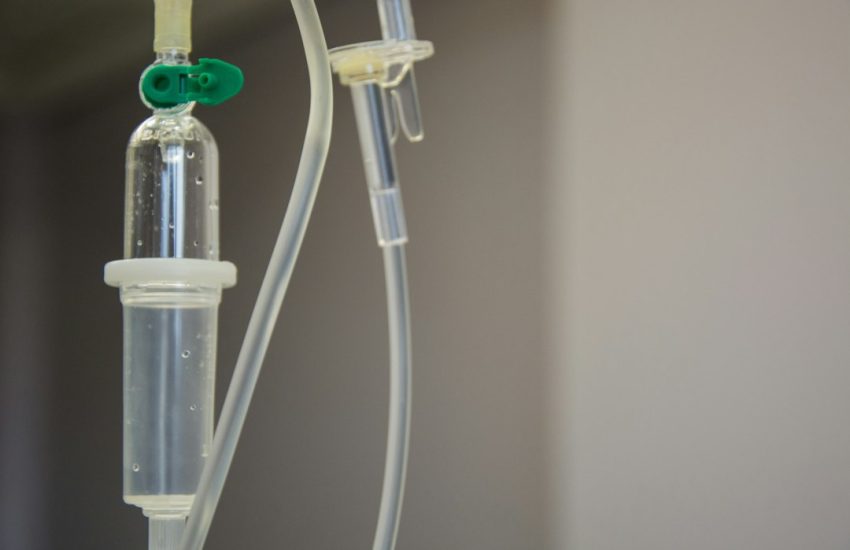14 Best Home Remedies for Athlete’s Foot
Athlete’s foot is a common skin fungus that’s contagious. It is also known as tinea pedis or tinea cruris, which is an infection that can occur between the toes.
If you have athlete’s foot, you know how unpleasant it can be. You also know that topical treatments aren’t always the answer. It can easily spread from one person to another, so it’s important to take measures to avoid getting infected.
In this article, we have compiled 10 home remedies for athlete’s foot – from tea tree oil to apple cider vinegar. We recommend a combination of these methods to really get your feet back into shape!
Contents
Hydrogen Peroxide
Hydrogen peroxide is a powerful antiseptic that can be used to cure athlete’s foot. It has strong oxidizing power, which kills fungi and bacteria. It is also believed to have anti-inflammatory properties which provide relief from the symptoms of athlete’s foot. Hydrogen peroxide is available at your local pharmacy or grocery store in both 3% and 5% concentrations.
Hydrogen peroxide has been used for years as a treatment for the fungus that causes athlete’s foot. It is an inexpensive, readily available solution that may work like other over-the-counter medications to treat the condition.
A study found that applying a 1% solution of hydrogen peroxide twice daily to the affected areas for two weeks, either did nothing or significantly improved the condition of the feet.
Tea Tree Oil
Tea tree oil is one of the more popular home remedies for athlete’s foot. It will help soothe and heal the skin while fighting off infection. To use it, combine one teaspoon of tea tree oil with two cups of warm water, then soak your feet for 20 minutes.
Tea tree is a natural antiseptic, so it’s great for killing bacteria. It is also anti-fungal, so it works to dry up the fungus that causes athlete’s foot. Tea tree is available in lotion form at most drugstores or grocery stores.
When applied topically, this remedy is extremely effective at getting rid of the fungi that cause athlete’s foot. You can also use tea tree oil to get rid of other skin infections, including pimples and boils. Tea tree oil has been shown to be just as effective as an antibiotic for some types of skin infections.
Neem Oil
Neem oil is recommended for the treatment of athlete’s foot because it contains natural antifungals. The anti-fungal properties in neem oil work to fight fungus in your toes, which can cause athlete’s foot. Neem oil also has antibacterial properties that kill bacteria in your feet that might be contributing to the infection.
Neem is not just an herb known for its medicinal properties. You can also use it on your skin to deal with different types of infections, including athlete’s foot. This type of fungus affects mostly people who are constantly moving and sweating. A person’s shoes provide the perfect breeding ground for the infection.
Neem oil is a natural fungus killer that can keep fungi at bay and promote faster healing.
The neem oil penetrates the skin and has anti-inflammatory properties that may help heal your feet faster. Before applying it to your feet, test out the neem oil on a small, unnoticeable area of your arm. If there are no negative side effects after 24 hours, you should be ok with the topical use of the oil.
Garlic
The antifungal and antibacterial properties in garlic make it a great natural remedy for athlete’s foot. Crush four cloves of garlic and add them to a pint of water. Let the mixture sit for about 5 minutes and then soak your feet in it for about 20 minutes. Apply an anti-fungal cream afterward, if desired.
It also increases the body’s immune system by producing antibodies to fight against fungal infections. Eating garlic will not only keep athlete’s foot at bay, but it will also help fight off colds and the flu.
Sea Salt Baths
A sea salt bath is a great way to soothe and relieve itching and irritation from athlete’s foot. Mix 2-3 cups of Epsom salt with warm water and soak your feet for 15-20 minutes. You can also make a foot soak by mixing 1/2 cup epsom salts with 1 quart of warm water, soaking the feet for about 20 minutes, then rinsing with cool water.
Sea salt baths are an inexpensive method to alleviate inflammation and dry skin. The salt removes the dead skin cells while also moisturizing the feet with magnesium chloride.
Talcum Powder
Talcum powder is an effective home remedy for athlete’s foot. Sprinkle some powder on the affected area, cover with a sock or towel to help stop its spread, and leave it on overnight. Repeat until the infection goes away. Be sure to wear shoes at all times so your feet don’t get reinfected.
Talcum powder can reduce moisture by absorbing sweat, which is also what makes it effective for reducing the severity of athlete’s foot. The powder will act as an antifungal barrier and protect the infected area from recontamination. It also soothes irritating skin, which makes it feel better.
Vicks VapoRub
Vicks VapoRub is a well-known cure for many ailments. What many don’t know, however, is that it is also a fantastic remedy for Athlete’s Foot. Simply rub some of the ointment on the affected area and cover with an airtight bandage to help dry and heal the area.
Vicks VapoRub is a topical over-the-counter medicine, topical cough suppressant, and topical decongestant. The active ingredients are camphor (1.8%), menthol (0.8%), and eucalyptus oil (0.4%). It can be used to relieve pain from sore muscles and joints, chest congestion, coughs, colds, and nasal congestion caused by allergies or the common cold.
Bitter Orange
Bitter orange is an herb that is well known for its ability to fight the fungi that cause athlete’s foot. You can put it in a spray or use it as a topical treatment. It’s also likely to be more effective because you don’t want to ingest the bitter orange, so it won’t stop working when you wash your feet.
This fruit has been used for centuries to treat various medical conditions. Bitter orange is excellent for treating conditions such as fungal infections, diarrhea, and diseases of the stomach. In addition to these benefits, scientists have found that this fruit can be an effective way to get rid of Athlete’s Foot.
When used externally, it has the ability to kill the fungus that causes this condition. It may also relieve itching and burning sensation associated with athlete’s foot.
Sunflower Oil
Sunflower oil is not only edible but can also be used as a topical remedy for athlete’s foot. This is because the oil contains linoleic acid that helps regulate the pH of the skin and treat fungus. The oil can also help heal other skin infections like eczema, acne, and ringworm.
It has a high content of linoleic acid and omega-6 fatty acids and it strengthens and moisturizes the skin on the feet. One of the advantages is that it can be easily purchased at any store. Simply massage some sunflower oil into your feet and put on socks to prevent more itching. Repeat this process on a daily basis until you see improvement in your condition.
The application of sunflower oil will reduce itching and promote healing. Sunflower oil penetrates deep into the skin to hydrate and nourishes it from within. It helps fight athlete’s foot by penetrating to heal dry skin and cracks, soothe itchiness and reduce pain.
Green Tea
Green tea is a powerful antioxidant that destroys the fungus that causes athlete’s foot. It contains caffeine and theanine, which dry out the skin and inhibit fungus. Pour boiling water over green tea bags and steep them for 15 minutes. Soak your feet in the mixture twice a day.
Green Tea is a natural antiseptic. It is also a powerful antioxidant that helps heal wounds and protect the skin from damage. You can get these benefits from green tea by brewing some soluble tea bags in boiling water.
The main health benefit of green tea is that it contains epigallocatechin gallate, also known as EGCG. Studies have shown that EGCG can help treat athlete’s foot by killing off the fungus that causes it.
Sosa
The most popular home remedy for athlete’s foot is a combination of baking soda and water. The mixture should be applied to the area for about 10 minutes, then the area should be rinsed off with cold water. This will kill bacteria that is causing the infection. There are other supplies that you can use, such as vinegar or tea tree oil. These are applied in similar ways although they have different benefits for the skin.
Sosa is an easy, safe, and inexpensive remedy to try for athlete’s foot. Mix two tablespoons of baking soda with one tablespoon of salt. Add enough water to get a paste. Apply the paste to the affected area and cover it with a band-aid. Leave on for an hour or overnight, then wash off with clear water. Repeat if necessary.
Vinegar
Vinegar is a good antibiotic and antifungal that can help relieve athlete’s foot. It can be found in most supermarkets and works well as a topical solution. Many people apply vinegar to the feet and leave it on for five to ten minutes before rinsing it off.
It is an inexpensive treatment that everyone should have in their medicine cabinet. Simply pour vinegar and water into a spray bottle, apply it to the affected area, and cover with a bandage or gauze to avoid letting air reach the foot.
It can be applied to the affected area as often as desired, and it also helps to prevent future outbreaks. Some people use it in hot water baths or soak their feet in vinegar before going to bed.
Cornstarch
Cornstarch has been used as a remedy for athlete’s foot since ancient times. Moisturize the area around the sore with cornstarch mixed with water and make sure to let it dry before putting on socks. You can also add cornstarch to a bowl of hot water, into which you will dip the cloth. Soak the affected areas in this solution and leave it there for twenty minutes before removing it.
The major advantage of this ingredient is that it absorbs moisture and reduces friction. It washes off easily with soap and water and can be used to make a paste or ointment.
UVC Light
UV treatment has been used effectively to treat athlete’s foot. The visible light of the sun converts skin cells that host Rickettsia, or the bacteria that causes athlete’s foot, into carbon dioxide which can be easily washed off with water. In addition, the UVC lights kill the bacteria without harming skin cells.
The UVC light is able to penetrate the layer of dead cells that form the outermost layer of your skin, thus killing any bacteria present on the skin. This will help clear up any athlete’s foot you have and maintain good oral hygiene.
Final Thoughts
Athlete’s foot can be difficult to treat and that’s why it’s important to have a good understanding of how this type of fungus gets in your body, how long it can stay there, and what you can do to prevent it from returning once you’ve contracted it.
There are many things you can do to prevent athlete’s foot from coming back, but the best way is to keep your feet clean and dry. You should also try to reduce the bacteria on your feet by wearing shoes that have thick, non-porous, closed shoes. The humidity in your home or gym will also help with this because it makes it harder for the fungus to grow.
There are many home remedies for athlete’s foot including tea tree oil, vinegar, hydrogen peroxide, and alcohol. One thing to keep in mind is that these home remedies should not be used more than twice a day due to the drying effect they have on the skin.
The most important thing to remember is that prevention is key. You can go a long way in terms of stopping the problem by taking proper precautions and practicing good hygiene. If you do get athlete’s foot, however, there are many things you can do at home to alleviate the pain and speed up recovery as outlined above.



